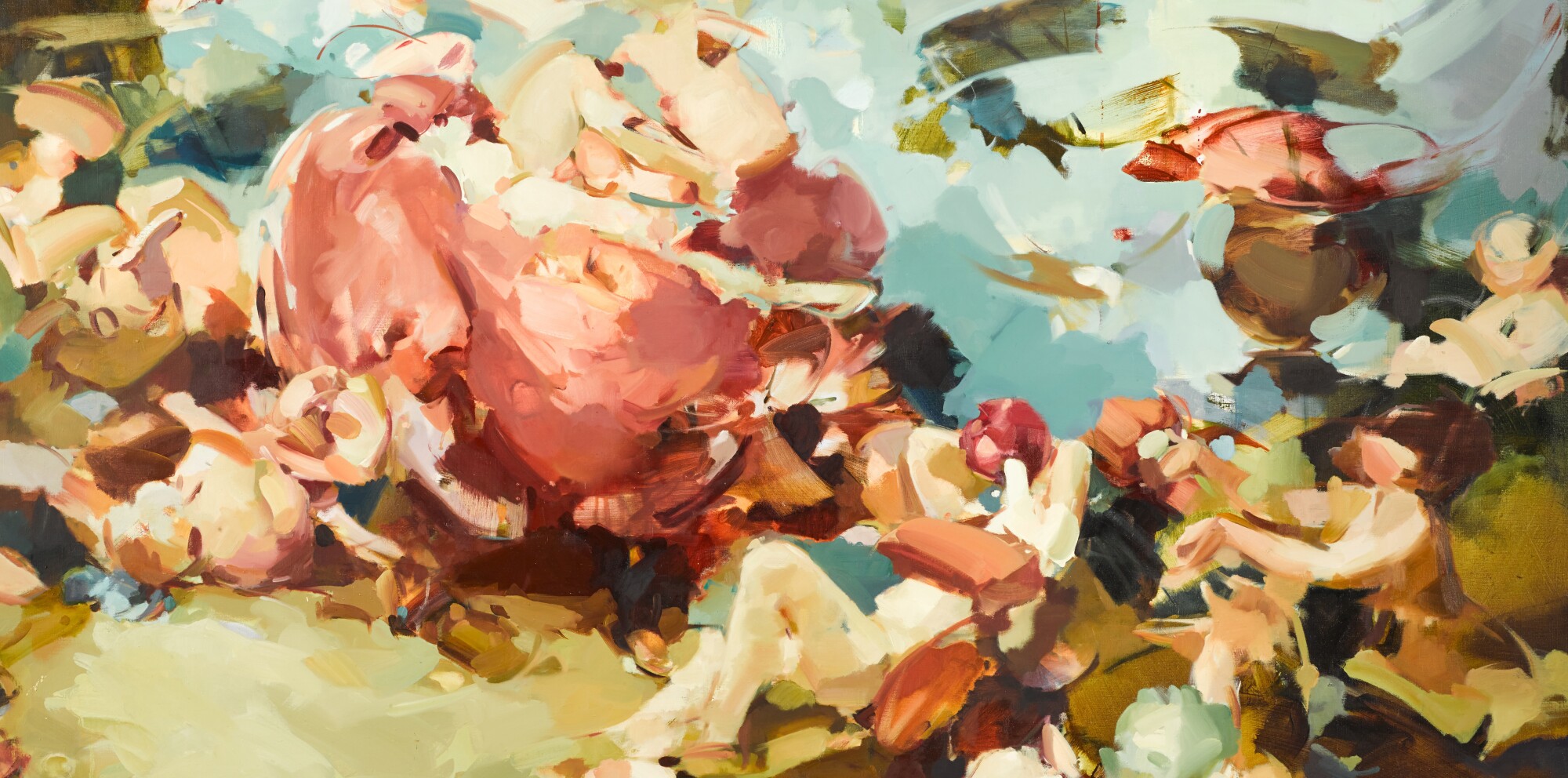“To me, there is something corporeal about paint and I’m interested in the way a painterly gesture can talk about the physical experience of touch in a visceral way, breaking down the distance between the viewer and work.”

Navigating the fertile terrain between abstraction and figuration with vivid painterly imagination, Flora Yukhnovich’s I’ll Have What She’s Having masterfully reconciles the visual language of the Rococo with contemporary cultural references to reflect on the origins of entrenched notions of beauty and femininity, altogether re-negotiating their boundaries. Since graduating from her MA at the City & Guilds of London Art School in 2017, Yukhnovich has exhibited at Parafin, London, GASK, the Gallery of the Central Bohemian Region, Czech Republic, the Jerwood Gallery Hastings, Blenheim Walk Gallery, Leeds Arts University, and has recently joined the roster of Victoria Miro. In 2022, the artist will have a solo exhibition at Victoria Miro and an exhibition of works responding to the collection at The Ashmolean, Oxford.

The Wallace Collection, London
Image: © Wallace Collection / © Wallace Collection, London, UK / Bridgeman Images
Sumptuous and alluring, Yukhnovich’s visceral brushwork reimagines the playful and erotic compositions of Jean-Honoré Fragonard, while passages of vibrant colour evoke the delicate 18th century colour palette of Francois Boucher with a distinctly contemporary eye. Yukhnovich borrows from the Rococo trope of the fête galante pioneered by Watteau, depicting elegantly dressed up men and women at impassioned play in parkland settings, to create paintings that are both tantalisingly figurative and inherently non-representational, cunningly echoing the compositional concerns of more contemporary painters such as Joan Mitchell, Helen Frankenthaler and Cecily Brown. Slipping in and out of focus, abstract forms populate Yukhnovich’s composition, revealing references to fleshy bodies, costumes and shrubbery, anchoring the suggestive arrangements in a visual vocabulary that is always recognizable from afar, yet entirely indeterminate up close. The confines of form are broken, to centre the artistsic focus on colour and sensation. Saturation, tone and texture underpin the entire composition, the sweeping expanse of lush gestural brushstrokes invites the viewer to become complicit, to actively engage and decipher the dynamic painterly mark-making, which defies precise classification. “I like the idea of combining these two art historical moments which have become highly gendered: the pretty rococo imagery and the machismo of abstraction,” the artist explains, “But really abstraction and figuration don’t feel separate to me. They are two different points in the same process, part of a spectrum which ranges from very loose, abstracted marks through to tightly articulated figuration. I do want the resulting paintings to remain open and ambiguous despite their figuration. The viewer has to fill in the looser areas in their mind and I hope that leads to a multiplicity of different readings” (Flora Yukhnovich cited in: Ibid.).

The Wallace Collection, London
Image: © Wallace Collection / © Wallace Collection, London, UK / Bridgeman Images
The female form, so often excessively eroticised as the object of male desire in 18th century art, is visible and obscured at once in Yukhnovich’s distinctive melee of dissolving limbs. Disrupting the male gaze, the female figures refuse to be seen, escaping objectification via abstraction. Yukhnovich’s work then becomes a vehicle to explore the sexual politics at play in art history, the relationship between historical and contemporary ideas of femininity and how gendered positions are encoded and reinforced through aesthetics. “Many of the popular [Rococo] narratives seem little more than vehicles for painting naked women,” Yukhnovich elaborates, “So naturally, these figures enter my paintings and it’s impossible not to think about the notion of objectification, both in the act of painting the figures and in the way a painting might be viewed. I do try to restore their agency by abstracting, breaking down the boundaries of the looked-at, solid figure, suggesting instead a pervasive, all-over sense of something uncontainable which permeates the paint on the surface” (Flora Yukhnovich cited in: Ibid.).
Combining a remarkable density of content with her unparalleled treatment of paint I’ll Have What She’s Having is a true career highlight in an emerging creative output that seems to be continually evolving, a painterly tour-de-force of a contemporary master in the making.